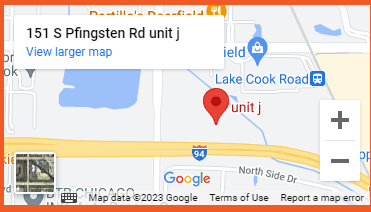If you’re an avid tennis enthusiast, you’ve probably dreamt of having a backyard tennis court. Playing tennis anytime you want, without worrying about court availability or the cost of renting a tennis court, is undoubtedly enticing. But before your dream becomes a reality, consider the cost. In this cost guide, we’ll break down the expenses of building a tennis court, helping you understand the factors influencing the cost, hidden expenses to consider, and much more.

Choosing the Right Location
Selecting the perfect location for your tennis courts is the first crucial decision in this journey. The chosen site will significantly affect court construction costs, accessibility, and the overall playing experience. Assessing the soil conditions is essential, as poor soil might require a stronger foundation, contributing to the expense.
Materials Matter
Clay Tennis Court: Clay courts offer excellent playability and are a favorite among professional players. Nevertheless, they are subject to frequent repairs and have a middle to high price for a tennis court installation.
Synthetic Grass: The option for low court maintenance costs offers a consistent playing surface with an installation price. In the long run, it may save a lot of money because it requires little or no maintenance.
Concrete Tennis Court: Concrete courts are durable and require minimal maintenance. They fall within a moderate price making them a popular choice.
Asphalt Tennis Court: Asphalt tennis court costs are worth it because they are cost-effective and easy to maintain. They are commonly chosen for residential Athletic courts setups, offering a durable playing tennis court surface.
Preparing the Ground
The site preparation process, which includes excavation, grading, and drainage, is fundamental to ensure your tennis court stands the test of time. A stable foundation can be created through proper site preparation. It also supports the stability of your tennis court.
Proper site preparation is essential for creating a stable foundation. It also contributes to the longevity of your tennis court. A well-graded surface with efficient drainage ensures that rainwater won’t accumulate on the court, preventing damage.
Court Size and Layout
The size and layout of your tennis court are pivotal. Directly affecting the construction cost, the greater the court, the more is spent on the materials and labor. A standard size for singles play is 27 feet wide and 78 feet long, while a doubles court is 36 feet wide.
You, on the other hand, may choose a size, configuration, playing style, and arrangement that fits your playing preferences and specific space. Customization, though exciting, can add to the cost. You should also consider additional features like spectator seating and shaded areas for a complete tennis experience.
Fencing It In
Enclosing your tennis court is crucial for safety, preventing stray balls from interfering with your game, and ensuring privacy. The price of a particular fencing depends on its type and height.
Typical fencing options include chain-link, vinyl, and wood. While chain-link fencing is affordable, it might not be as aesthetically pleasing for your home. Wood and vinyl offer a more appealing appearance but can be pricier. Fencing costs can be relatively inexpensive or quite expensive, depending on the material selected.
Lighting the Way
Tennis enthusiasts often desire the flexibility to play at any time of the day. Proper tennis court lighting can extend your playing hours well into the evening. However, this convenience has an added court lighting cost.
Court lighting is crucial if you plan to play in the evening, as it ensures good visibility and safety. To save on energy costs, consider energy-efficient LED lighting systems. Well-lit courts provide a fantastic experience, allowing you to enjoy matches under the starry night sky.
Accessorize Your Court
When constructing a tennis court, it is important to consider several additional features that can enhance the overall experience for players and spectators alike. Here are some key aspects to think about beyond the core court construction:
Spectator Seating: If you plan on hosting friendly matches or small tournaments, seating is a must. Court costs can vary based on the seating capacity and style you prefer.
Locker Rooms: A dedicated space for changing and storing equipment can elevate the tennis-playing experience. Building locker rooms will add to your expenses, so plan accordingly.
Shaded Areas: Providing shaded areas with seating or benches for players to take breaks or enjoy refreshments can make your tennis court more inviting.
Professional Help vs. DIY
Now, you’re probably wondering if you should take the DIY approach to building your tennis court to save money. While it is possible, there are factors to consider.
DIY Tennis Court Construction:
- It has the potential to be cheaper if you know what you are doing.
- It demands detailed planning and involves specialized knowledge.
- Requires particular materials, equipment, and space.
- Risks may arise as a result of inexperience or lack of resources.
- It might lead to a poor-quality product with low surface levels and poor drainage.
HCA Sports Experts:
- Professional experts with extensive industry experience.
- Courts are built for success and longevity.
- Use high-grade sporting court materials.
- Follow local codes and regulations.
- Provide design advice and assist in choosing materials.
- Extensive customer service, from pre-construction consultation to post-construction support and guidance towards maintenance.
- Foresee potential problems pre-construction and post-construction.
- Provide a court that satisfies the necessary conditions and rules of sport measurement.
Maintenance Is Key
When considering a tennis court construction project, explore various surface options and their long-term implications. Here is an overview of the tennis court materials mentioned before and their maintenance requirements to help you make an informed decision:
- Clay Courts: These require more upkeep, including frequent watering and leveling, which adds to the long-term cost.
- Synthetic Grass: Synthetic artificial grass tennis court costs are low-maintenance and cost-effective, saving you money in the long run.
- Concrete and Asphalt Courts: These tennis court surfaces are durable and require minimal maintenance, but tennis court resurfacing may be needed over time.
Permits and Regulations
Building codes and regulations are critical aspects of tennis court construction. Different regions have distinct building codes and regulations that can affect the cost of permits and inspections. Ensure your tennis court meets safety and zoning requirements.
Partnering with HCA Sports, a professional contractor, can be a strategic advantage for your project. Their comprehensive understanding of local, state, and federal codes guarantees full compliance, providing you with peace of mind throughout the construction process.
Hidden Costs to Consider
Delving into the financial aspects of building and maintaining a tennis court can be enlightening. Beyond the primary expenses, there are other costs to keep in mind:
- Landscaping: Your tennis court may impact the surrounding landscape, which may require post-construction landscaping or adjustments.
- Drainage Solutions: If your property doesn’t have efficient drainage, additional measures may be necessary to avoid water accumulation on the court.
- Resurfacing: Over time, regardless of the court surface, resurfacing becomes a requirement. The frequency and cost of resurfacing can vary.
- Insurance: It’s advisable to have insurance to cover accidents or injuries on your property.
- Security and Access Control: Depending on your location, you might need security measures and access control to protect your tennis court.
How Long Does It Take?
The timeline for building your tennis court can vary based on factors like the weather, permit processing times, and the complexity of your project. It usually lasts several weeks or months on average. Therefore, you must share with your contractor the estimated timeline that works for you to make relevant adjustments.
Get Your Tennis Court Project Started
It is advised that you consult professionals such as HCA Sports, as they will give you a more accurate cost estimate for your particular project. With an attention to detail that sets them apart from the competition, they’ll ensure your court is ideally suited to your location and surroundings. Moreover, they provide various services such as court construction and installation, resurfacing, and repair; thus, you can always acquire the specific court you desire.
Enjoying tennis all year round in comfortable conditions is a luxury a residential indoor tennis court can provide. If you’re ready to have the home court advantage and enjoy tennis right at your doorstep, reach out to HCA Sports and turn your tennis court dream into a reality.
FAQs
Q1. How much space do you need for a tennis court?
The ideal space for a tennis court depends on the size and layout you prefer. A standard singles tennis court requires a space of approximately 27 feet in width and 78 feet in length. Doubles courts are wider at 36 feet. Customizing the size is possible, but it should be planned according to your available space.
Q2. What are some considerations when planning an indoor court installation?
Consider materials, lighting, HVAC systems, and space layout installation. Each decision will influence cost and experience.
Q3. How do I maintain an indoor court?
Maintenance for indoor tennis courts varies depending on the surface material. Regular upkeep, such as cleaning, resurfacing, and repairs, will ensure the court’s longevity and performance.

Nate Parsons is the owner of Home Court Advantage, a leading manufacturer and supplier of premium residential and commercial athletic courts based in Northern Illinois. With a strong background in therapeutic recreation and business from York College, Nate has excelled in the sports industry, from college tennis to national rankings in platform tennis. He has served as the Director of Racquet Sports at Glen View Club, President of the Professional Platform Tennis Association, and as a teaching professional in tennis, pickleball, and platform tennis. Nate is also the founder of Pickleball AI, a platform for tracking players and points, and Club Dink, a pickleball brand that brings fun to the game.










